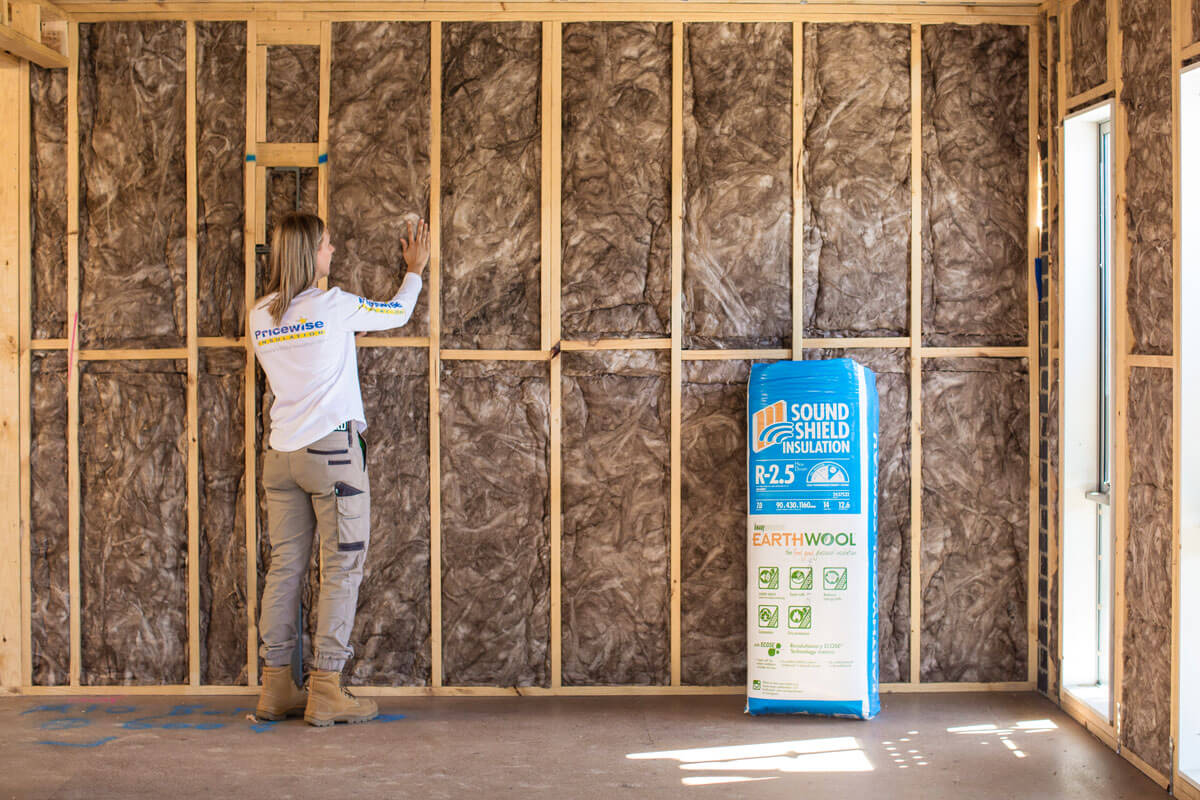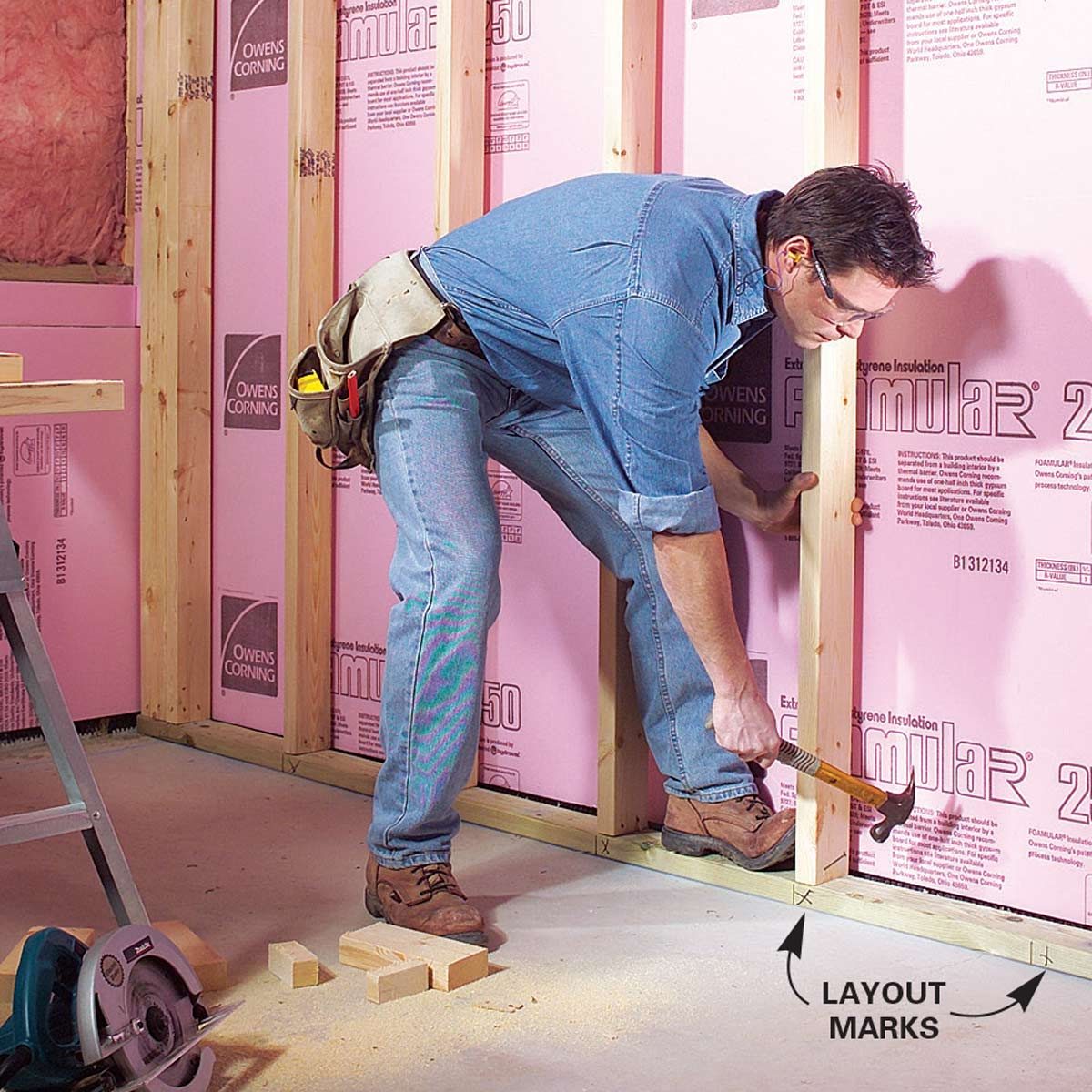Understanding the Importance of Bathroom Wall Insulation

Insulating bathroom walls is a crucial aspect of home improvement that offers numerous benefits, enhancing energy efficiency, moisture control, and noise reduction. Understanding the significance of bathroom wall insulation will help you make informed decisions about your home’s comfort and functionality.
Improved Energy Efficiency
Insulation acts as a barrier, preventing heat from escaping during cold months and keeping the bathroom cooler in warm seasons. By reducing heat loss and gain, insulation minimizes energy consumption and lowers heating and cooling costs.
Moisture Control, Installing insulation in bathroom walls
Bathrooms are prone to moisture buildup due to showers, baths, and other water-related activities. Insulation helps regulate moisture levels by absorbing excess humidity, preventing condensation and mold growth. Mold can cause respiratory problems and damage bathroom surfaces, making insulation essential for maintaining a healthy and clean environment.
Noise Reduction
Insulation also acts as a sound barrier, reducing noise transmission between bathrooms and adjacent rooms. This is especially beneficial in multi-story homes or apartments where noise can be a disturbance.
Types of Insulation for Bathroom Walls: Installing Insulation In Bathroom Walls

Installing insulation in bathroom walls – When choosing insulation for bathroom walls, it’s essential to consider factors like moisture resistance, R-value, and installation method. Here’s an overview of the different types of insulation available:
Fiberglass Insulation
- Pros: Affordable, easy to install, moisture-resistant.
- Cons: Lower R-value than other options, can be itchy to handle.
Cellulose Insulation
- Pros: High R-value, fire-resistant, eco-friendly.
- Cons: More expensive than fiberglass, requires professional installation, can absorb moisture if not properly installed.
Spray Foam Insulation
- Pros: Highest R-value, excellent air sealing, moisture-resistant.
- Cons: Most expensive option, requires professional installation, can release harmful gases during installation.
Choosing the Right Insulation
The best type of insulation for your bathroom walls depends on your specific needs. If cost is a primary concern, fiberglass is a good option. For higher R-values, consider cellulose or spray foam. If moisture resistance is a priority, spray foam is the best choice. Ultimately, consult a professional insulation contractor to determine the most suitable option for your bathroom.
Installing Insulation in Bathroom Walls

Installing insulation in bathroom walls is a crucial step in ensuring a comfortable and energy-efficient bathroom. Proper insulation helps regulate temperature, reduce noise, and prevent moisture buildup, creating a more comfortable and healthier bathroom environment.
Installing insulation in bathroom walls involves several steps, including preparing the walls, cutting the insulation, and securing it in place. It is important to follow these steps carefully to ensure a proper and effective insulation installation.
Preparing the Walls
Before installing insulation, it is important to prepare the walls by removing any existing insulation or debris. The walls should be clean and dry to ensure proper adhesion of the insulation. If there are any holes or cracks in the walls, they should be patched or sealed to prevent air leaks.
Cutting the Insulation
Once the walls are prepared, the insulation can be cut to fit. The insulation should be cut to fit snugly between the wall studs, without any gaps or overlaps. If the insulation is too loose, it will not be effective in insulating the walls. If the insulation is too tight, it can compress and lose its insulating properties.
Securing the Insulation
Once the insulation is cut, it can be secured in place using a variety of methods, including staples, adhesive, or spray foam. Staples are a quick and easy way to secure insulation, but they can damage the insulation if they are not installed correctly. Adhesive is a more permanent way to secure insulation, but it can be more difficult to apply. Spray foam is a versatile option that can be used to fill gaps and seal around pipes and wires.
Installing Insulation Around Pipes and Wires
When installing insulation around pipes and wires, it is important to take extra care to ensure that the insulation does not block the flow of air or water. The insulation should be cut to fit snugly around the pipes and wires, without any gaps or overlaps. If the insulation is too tight, it can compress and lose its insulating properties. If the insulation is too loose, it can allow air or water to leak through.
Tips for Ensuring a Proper and Effective Insulation Installation
- Use the correct type of insulation for your bathroom. There are a variety of insulation materials available, each with its own advantages and disadvantages.
- Install the insulation according to the manufacturer’s instructions. This will ensure that the insulation is installed properly and effectively.
- Seal all gaps and cracks around the insulation. This will prevent air leaks and ensure that the insulation is working properly.
- Inspect the insulation regularly. This will help you identify any problems with the insulation and make repairs as needed.
To effectively insulate bathroom walls, it’s crucial to consider the thickness of the stall walls. Thicker walls, as discussed in bathroom stall wall thickness , provide better soundproofing and thermal insulation. By ensuring adequate wall thickness, you can enhance the privacy and comfort of your bathroom while minimizing heat loss and noise transfer.
Therefore, when installing insulation in bathroom walls, pay attention to the thickness of the stall walls to optimize the insulation’s effectiveness.
Installing insulation in bathroom walls is essential for keeping the space warm and comfortable, especially during cold months. However, before applying insulation, it’s crucial to ensure that the walls are properly prepared, including applying a semi-gloss paint. Semi-gloss for bathroom walls is highly recommended due to its durability, moisture resistance, and ability to withstand the humid environment of bathrooms.
Once the semi-gloss paint has dried, you can proceed with installing insulation in the bathroom walls, ensuring optimal temperature regulation and energy efficiency.